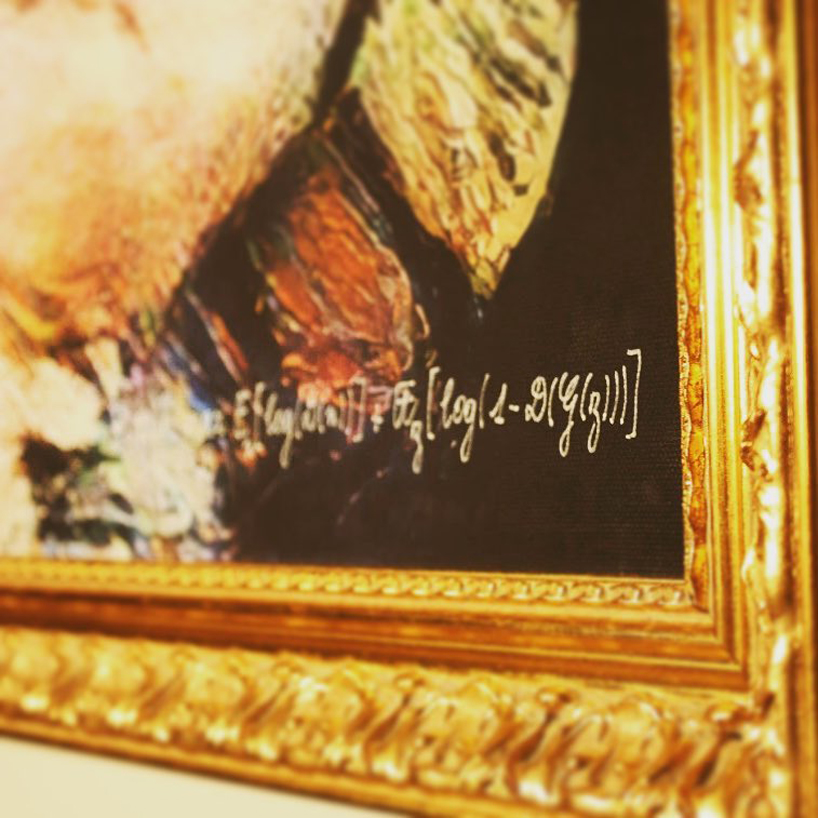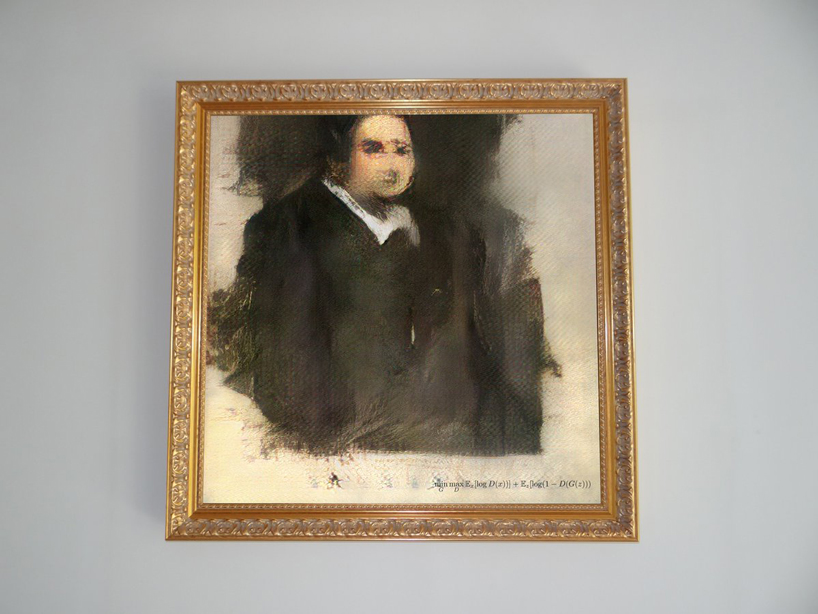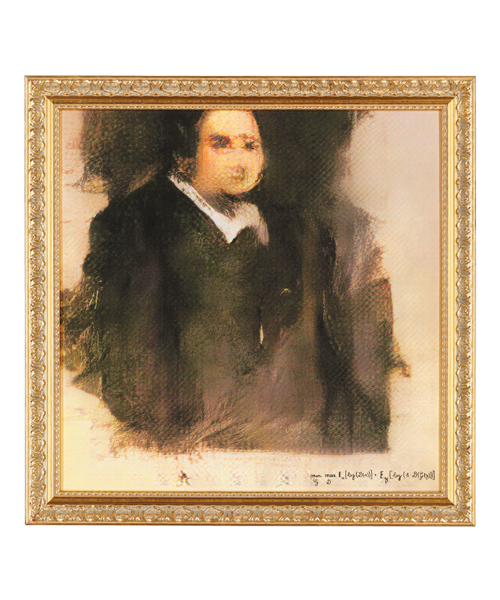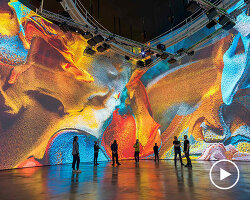an artwork created using AI has been sold at auction. the portrait painted using artificial intelligence sold at christie’s in new york on thursday for $432,500 – it’s estimated price was between $7,000 and $10,000. the portrait is the first piece of AI art to go under the hammer at a major auction house.
the painting, called portrait of edmond belamy, was created by paris-based art collective obvious and is the first piece of AI art to go under the hammer at a major auction house. the artwork was produced using an algorithm and a data set of 15,000 portraits painted between the 14th and 20th centuries.

the portrait was made using ink, canvas and an artificial intelligence algorithm, and was signed with a math equation
image courtesy of obvious
beyond the fact it was created using an archive of historical paintings, the portrait has come under scrutiny regarding the technology it employs in the first place. other artists who work with AI have come out and said that the portrait is unoriginal. generative adversarial networks, or GANs, the technology used to create the portrait, have been used by several artists over the last three years, including by the artists mario klingemann, anna ridler and robbie barrat.

image courtesy of christie’s
barrat has even gone as far as to say that this particular work uses a code he himself had written. obvious told the technology website the verge on tuesday that it did use barrat’s code, but modified it.
left: the “AI generated” portrait Christie’s is auctioning off right now
right: outputs from a neural network I trained and put online *over a year ago*.
Does anyone else care about this? Am I crazy for thinking that they really just used my network and are selling the results? pic.twitter.com/wAdSOe7gwz
— Robbie Barrat (@DrBeef_) October 25, 2018
‘we would like to thank the AI community, especially to those who have been pioneering the use of this new technology, including ian goodfellow, the creator of the GAN algorithm,’ obvious said in its statement today. ‘and artist robbie barrat, who has been a great influence for us.’ obvious describes itself as ‘a collective of friends, artists, and researchers, driven by a common sensibility regarding questions bounded to the increasing advent of artificial intelligence and machine learning’.










